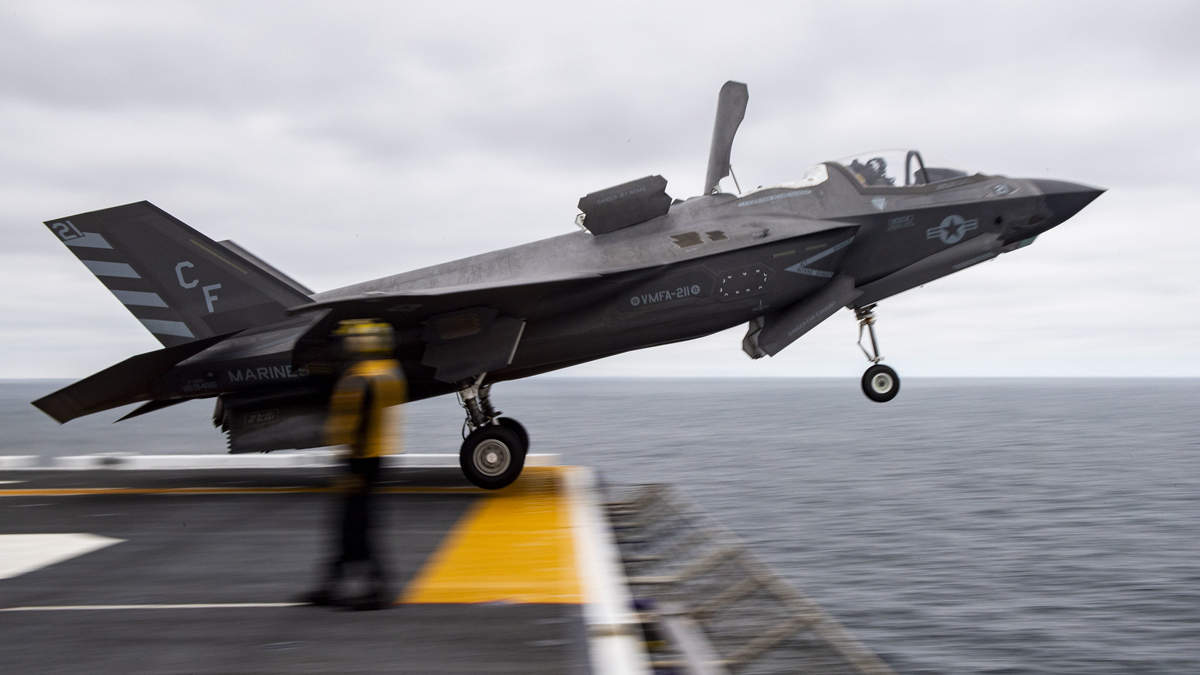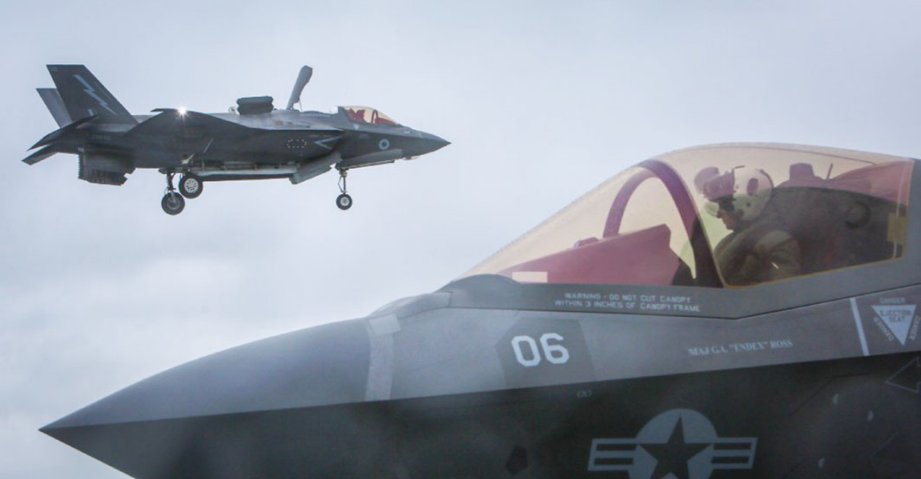It seems the world’s “most advanced” fighter jet, F-35 Lightning II, is itself vulnerable to lightning!
The official Twitter account of Nellis Air Force Base posted a rather peculiar photograph of two of the US Air Force’s F-35A fighter jets parked at the airbase.
The image showed the world-famous stealth jet, known by its official nickname “Lightning II”, being protected by lightning rods.
The tweet that says, “Which lightning do you think strikes harder?” came just days after the US Marine Corps announced that a few of their F-35Bs had been grounded in Japan with millions of dollars in damage after they were struck by lightning while they were performing sorties earlier this month.
USAF’s F-35As have also been banned in the past from flying during thunderstorms due to concerns over a possible explosion of their fuel tanks when struck by lightning.

The F-35A jets shown in the tweet belong to the Hill Air Force Base in Utah, which is home to the 388th and 419th Fighter Wings. At present, the jets are at the Nellis Air Force Base, located on the outskirts of Las Vegas, and are taking part in the Red Flag 21-3 exercise, which commenced in Nevada on July 19 and will continue till August 6.
“These F-35 Lightning IIs from @hafb were parked on the @NellisAFB flight line during last night’s #Vegas storm. Today, they’re ready to rumble for #RedFlag 21-3,” the tweet read.
The Red Flag exercises are conducted multiple times each year from this base. They take place over the adjacent sprawling Nevada Test and Training Range (NTTR), close to the US military’s secretive base, Area 51.
Which lightning do you think strikes harder?
These F-35 Lightning IIs from @hafb were parked on the @NellisAFB flight line during last night’s #Vegas storm. Today, they’re ready to rumble for #RedFlag 21-3@DeptofDefense @usairforce @USAF_ACC @thef35 @theF35JPO #nvwx @NWSVegas pic.twitter.com/F4OTvPxnku
— Nellis Air Force Base (@NellisAFB) July 26, 2021
The Red Flag exercises involve a wide array of USAF fighter jets. They also include jets from the US Navy and Marine Corps. Although the Red Flag 21-3 appears to be almost entirely an American event, many foreign allies and partners also participate in the exercise.
Recently, the F-117 Nighthawk, the world’s first stealth combat jet, was spotted over Nevada. Although officially retired in 2008, the Nighthawks have been flying as “red air aggressors” in support of various exercises for some time now.
Three Reasons Why Pegasus Media Probe Sounds Like Selective Targeting Of Israel
Technical Issues With F-35s
The tweet is meant to be light-hearted but it raises a serious question. The US Marine Corps confirmed in a statement last week that the two F-35Bs attached with the Marine Corps Air Station Iwakuni in Japan, were struck by lightning during a flight on July 13. Fortunately, both the jets could land safely at the airbase and none of the pilots were injured.
“After conducting our standard reporting and assessment procedures, the weather-related incident was labeled as a class ‘A’ mishap due to the combined projected repair costs exceeding two and a half million U.S. dollars”, U.S. Marine Corps Captain Marco Valenzuela, a spokesperson for Marine Air Group 12 at Iwakuni, said in a statement to Marine Corps Times.
“The safe operation of our aircraft and the readiness of our squadrons are vitally important to us in order to continue supporting our allies, partners, and joint forces in the region”.

According to the US military, a Class ‘A’ incident is the most severe and costs at least $2.5 million in property damage, resulting in a total loss of the aircraft, or the death or disability of one or more individuals.
However, the Marine Corps Times report does not provide further details on the damage to the F-35Bs. It is said that the stealthy composite material used on the F-35 jets “does not provide inherent passive lightning protection” unlike the metal-clad aircraft.
US’ Most Spectacular F-35B Jets That Can Land & Take-Off Vertically Finally Gets A New Challenger
This is why USAF F-35s can be seen parked at the Nellis Air Force Base, next to mobile lightning rods to protect them from being struck by lightning.
Apart from this, there have also been concerns about any potential damage to the electronic systems of the aircraft, including the Autonomic Logistics Information System (ALIS), which “form the aircraft’s computer brain”.
By 2019, ALIS had reportedly received “support for lightning protection,” according to the Pentagon’s Office of the Director of Test and Evaluation, or DOT&E. The fuel system of the F-35 jet features an Onboard Inert Gas Generation System (OBIGGS).
When an F-35 guzzles gas, nitrogen-enriched air is pumped into the fuel system by the OBIGGS to ensure that dangerous gases do not build up in the empty space. If flammable gases are formed inside the aircraft, a lightning strike could ignite them and result in a catastrophic explosion.

An incident occurred with the OBIGGS of the Air Force’s F-35As last year. This led to the Joint Programme Office (JPO) instructing the units that operate this variant to not fly with 25 miles of lightning or thunderstorms. In October 2020, the manufacturer Lockheed Martin said that some modification was being done to fix this issue.
So far, there has been no information on whether the incident involving two F-35Bs in Japan was caused due to the OBIGGS or any other part of the fuel system. “The vertical takeoff variant F-35B has a slightly differently designed OBIGGS system, which fits around its lift fan and historically has made it immune to the lightning issues of its F-35A cousin”, according to Marine Corps Times.
However, according to reports, in 2018, the Marines announced plans to buy lightning rods to shield their F-35Bs at Iwakuni from strikes, specifically justifying the purchase by saying “the lightning rods being requested are needed for deploying aircraft to any expeditionary airfield in support of combat operations or training exercises that do not support all lightning protection requirements for the F-35B”.
The Pentagon’s Office of the Director of Operational Test and Evaluation also raised the issue pertaining to the B variant of the F-35 back in 2015. “The aircraft does not maintain residual inerting after flight for the required interval of 12 hours, which is a lightning protection requirement”, it wrote in its annual report.




